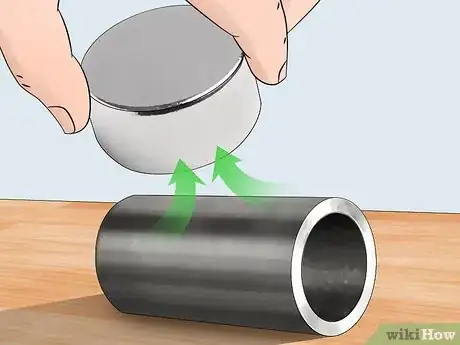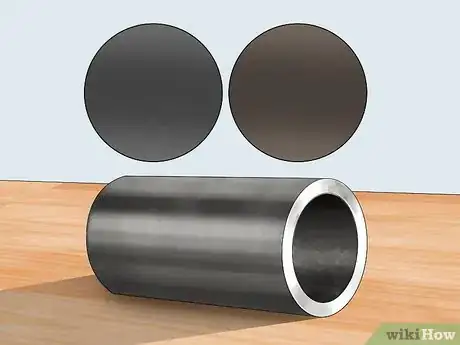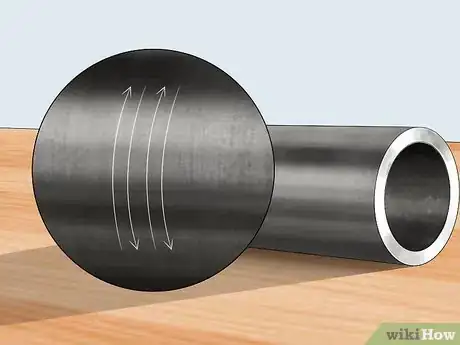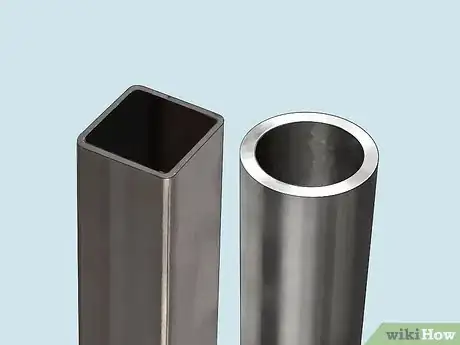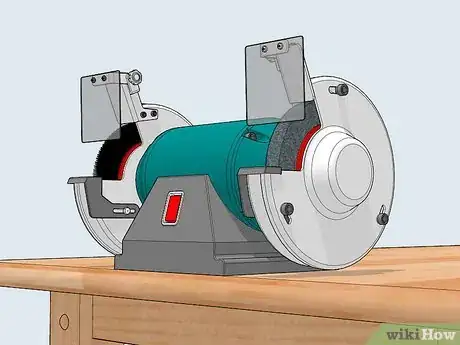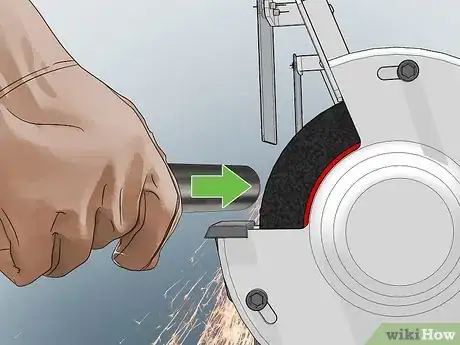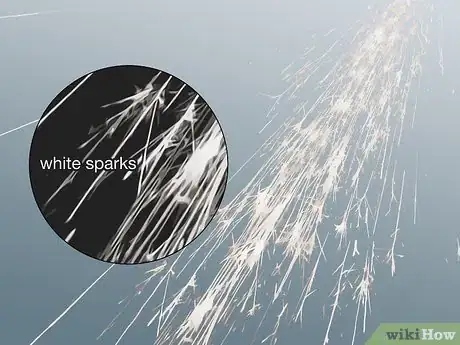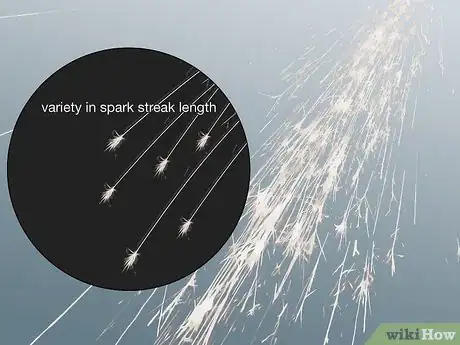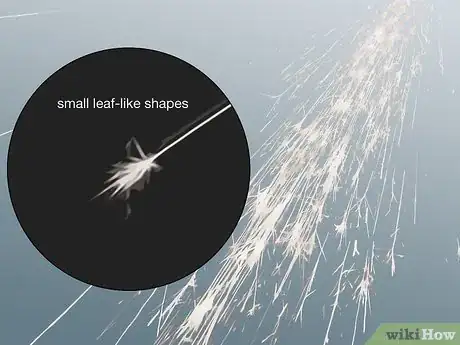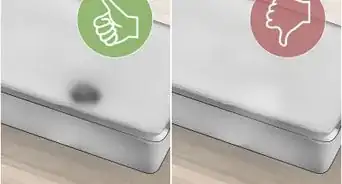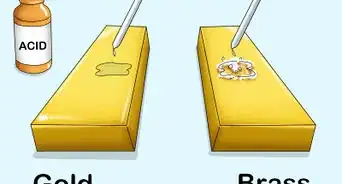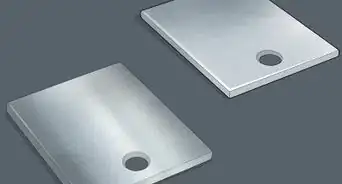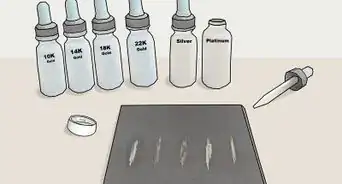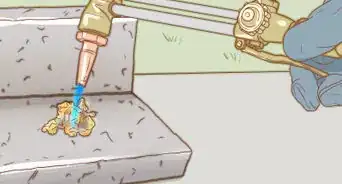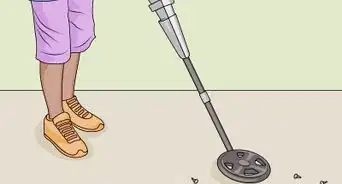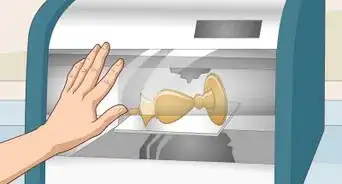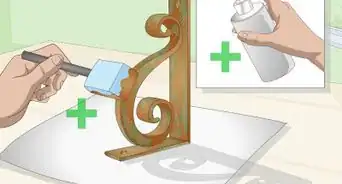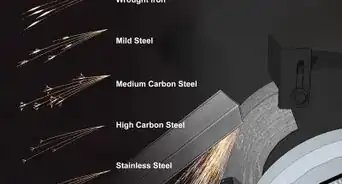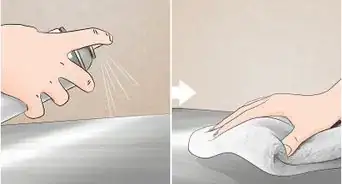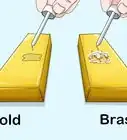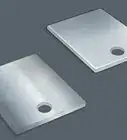This article was co-authored by wikiHow Staff. Our trained team of editors and researchers validate articles for accuracy and comprehensiveness. wikiHow's Content Management Team carefully monitors the work from our editorial staff to ensure that each article is backed by trusted research and meets our high quality standards.
There are 8 references cited in this article, which can be found at the bottom of the page.
This article has been viewed 7,749 times.
Learn more...
Mild steel, also known as low carbon steel, contains about 0.05% to 0.25% carbon by weight.[1] It’s relative affordability makes it a popular choice for many different applications. But, how do you know that what you’re dealing with is mild steel if you already have some steel on your hands? There are a few ways you can inspect and test it to give yourself a good idea of its carbon content.
Steps
Visual Inspection
-
1Try sticking a magnet to the metal to make sure it’s steel. Press a magnet against a surface of the metal and see if it sticks. If it does stick, the metal can be either steel or cast iron.[2]
- Note that this doesn’t tell you what type of steel you have on your hands. It just helps make sure you’re not mistaking a non-magnetic metal for steel.
-
2Look for the dark gray or brownish surface color of carbon steel. Inspect the surface of the metal closely and take note of its color. Identify it as possibly being mild steel if the surface has a dark, dull tone.[3]
- Keep in mind that freshly-engineered steel looks more bright gray and metallic, but darkens over time.
- Note that it’s very hard to confirm that a piece of steel has a low carbon content just from a visual inspection because all types of carbon steel can look similar.
Advertisement -
3Examine the surface for forging marks, which mild steel often has. Look closely at the surface for marks from hammers and machines. Recognize forging marks as an indication that the piece of steel you have may be mild steel.[4]
- On the other hand, high carbon steel often has fine lines, or rolling marks, running in 1 direction.
-
4Check whether the object is part of piping or framing, which are often mild steel. Consider the purpose of the object if it has already been shaped for a certain application. Classify it as probable mild steel if it is a steel pipe or a piece of some type of steel framing.[5]
- Other structural type steel and things like signs, wire fencing, and nails are commonly made from mild steel as well.
- Mild steel is also sometimes used to make home furnishings like kitchen-grade items and furniture, such as chairs or bed frames.
Spark Test
-
1Put on personal protective equipment. Wear goggles or a face mask with a full facial shield to protect your eyes from sparks. Put on heavy-duty work gloves to protect your hands while grinding metal.[6]
- Don’t wear tinted goggles or a tinted welding mask because you have to look closely at the color of the sparks to identify mild steel with a spark test.
-
2Use a bench grinder or portable grinder with a speed of 4500 feet-per-minute. Choose a portable or stationary grinder based on what you have available or are most comfortable using. Ensure that the grinder has a speed no less than 4500 feet-per-minute or you won’t be able to accurately perform the test.[7]
- Make sure that the grinding wheel is coarse, hard, and clean as well for the most accurate results.
-
3Hold the steel against the grinder so the sparks fly across your field of vision. Turn on the grinder and let the wheel get up to speed. Press part of the piece of metal against the wheel and adjust the angle and pressure to get a clear view of the sparks.[8]
- Applying more pressure also makes the spark streaks longer and easier to examine.
- If you’re using a portable grinder, clamp the steel on a workbench to stabilize it.
-
4Check the length and form of the sparks for indications of mild steel. Keep holding the steel against the grinding wheel, applying consistent pressure to maintain the spark streaks. Evaluate these 2 characteristics of the sparks to help identify whether what you’re dealing with is mild steel.[9]
- Both low carbon and high carbon steel produce white spark streams.
- Keep in mind that it can be very difficult to distinguish low carbon steel from high carbon steel by doing a spark test unless you’re experienced and have seen the difference in spark streaks before.
- If you have pieces of steel that you know are mild steel and high carbon steel, you could do a spark test for each one to start recognizing the different characteristics of the spark streaks.
-
5Look for some variety in spark streak length, which indicates mild steel. Watch the streaks coming off the metal as you grind it. Evaluate whether they’re all more or less the same length or if there is a variety of lengths.[10]
- Mild steel has some variety in streak length, whereas medium and high carbon steels have a much greater variety in streak length.
- This is where it helps if you’ve already seen the spark patterns of different types of steel, so you know more or less what you’re looking for.
-
6Watch for limited sparking with small leaf-like shapes of mild steel sparks. Look carefully at what shape the sparks coming off the streaks are. Recognize that mild steel sparks look kind of like a skinny leaf and have a limited firework-like appearance.[11]
- On the other hand, sparks from steel with higher carbon content have a much more firework-like appearance and no leafy shape.
- Sparks from high carbon steel also start much closer to the grinding wheel,
Warnings
- Always wear the appropriate PPE including eye protection and work gloves when you’re doing a spark test.⧼thumbs_response⧽
Things You’ll Need
Spark Test
- PPE
- Bench grinder or portable grinder
References
- ↑ https://www.metalsupermarkets.com/what-is-mild-steel/
- ↑ https://sciencing.com/identify-metal-8527080.html
- ↑ http://www.prguru.com.au/visually-identifying-steel/
- ↑ https://www.marineinsight.com/guidelines/how-to-identify-metals-in-engine-room-observation-and-spark-test/
- ↑ https://www.weldersuniverse.com/metals_steels.html
- ↑ https://www.osha.gov/SLTC/etools/eyeandface/ppe/impact.html
- ↑ https://fac.ksu.edu.sa/sites/default/files/Metal%20Identification%20Ready%20_unprotected.pdf
- ↑ https://www.marineinsight.com/guidelines/how-to-identify-metals-in-engine-room-observation-and-spark-test/
- ↑ https://fac.ksu.edu.sa/sites/default/files/Metal%20Identification%20Ready%20_unprotected.pdf
